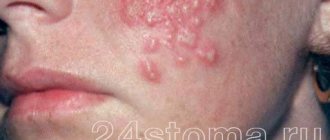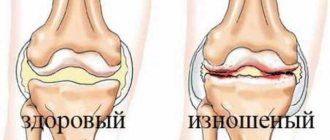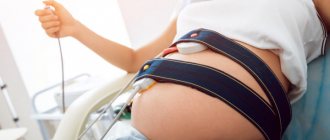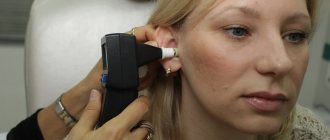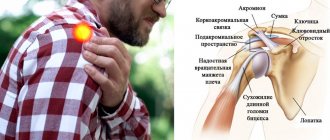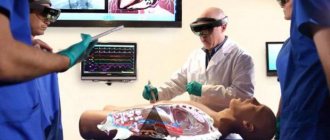What can cause an attack?
Infections that cause fever. The infection can be caused by bacteria, but more often febrile attacks occur with viral diseases (for example, roseola and influenza).
Vaccinations that cause fever. There is a small chance of febrile seizures after vaccination against measles, rubella and mumps, and diphtheria, tetanus and whooping cough. But the risks from incomplete vaccination are higher than the risk from a febrile attack after vaccination.
Heredity. If either parent has had a febrile seizure, the child is more likely to have seizures with fever.
A febrile attack, especially one occurring for the first time in life, is very frightening for parents. In fact, most of these attacks are not dangerous and do not lead to complications or brain damage. A child with simple febrile seizures is only slightly more likely to develop epilepsy than children who have never had a febrile seizure.
Prognosis and preventive methods
The disease is treatable, so the prognosis is positive in most cases. The situation can develop according to two scenarios - complete recovery of the patient, or transition of the pathology to epilepsy. The prognosis is made taking into account the risk of recurrence of seizures in the future, the development of epilepsy, neurological and intellectual disorders.
In most cases, attacks do not recur after the age of six. Neurological disorders are determined by the frequency and type of attacks. The prognosis worsens in the case of frequently recurring seizures of an atypical form - mental disorders are observed (developmental delay, mental retardation), the likelihood of transition to epilepsy increases to 15%.
“What to do about febrile seizures” is a question often asked by concerned parents. Our Center’s specialists advise, first of all, not to panic. When the first symptoms appear, you should immediately seek medical help!
How to help a child during an attack?
- Place your baby on his side on a flat surface and make sure he won't fall or hit anything during the cramp (such as crib bars).
- Record the time and tell the doctor when the attack began and how long it lasted.
Attention! Do not try to open the jaw, do not put anything into the child’s mouth during an attack, this can lead to injuries (broken teeth of the child and injured fingers of the person providing assistance). Do not try to restrict the child's movements during seizures, do not restrain him.
The child may be even more afraid of the attack than the parents. Try to calm him down and support him.
If the attack occurs for the first time in life, lasts longer than 5 minutes, the child is unusually sleepy and lethargic before or after the attack, call an ambulance.
In other cases, immediately show the child to the pediatrician. The doctor should examine the child after the attack to make sure there are no signs of a central nervous system infection (meningitis or encephalitis).
How to treat fever in a child who has previously had febrile seizures?
If the child does not have an increase in temperature during illness or after vaccination, it is not recommended to give antipyretic drugs! This does not reduce the risk of an attack.
If the temperature has risen, medications to reduce it make you feel better overall, but do not help with attacks.
The harm from anticonvulsants for the prevention of febrile seizures outweighs the benefits; they are almost never prescribed.
If a child’s febrile convulsions are prolonged, at the beginning of the attack it is recommended to administer a drug from the benzodiazepine group in the form of an enema, a spray in the nose or a gel on the cheek. Unfortunately, none of these forms are registered in Russia. Therefore, if an attack lasts longer than 5 minutes, an emergency doctor may give an injection of such a medicine.
For antipyretic drugs, children can be given ibuprofen at a dose of 10 mg/kg every 8 hours or paracetamol at a dose of 15 mg/kg every 6 hours. Don't give children aspirin!
Febrile seizures
Home → Useful articles → Epilepsy and other paroxysmal conditions → Febrile seizures
Febrile seizures are seizures that occur in children as young as 3 months. - 5 years associated with fever.
At this age, the child’s brain is not yet mature enough and is more sensitive to the effects of internal and external factors. Children with similar manifestations in their parents, as well as in the presence of pathologies of pregnancy and childbirth in the mother, are more predisposed to febrile convulsions.
Febrile convulsions appear in diseases that occur with a high temperature (above 38 ° C) - acute viral infection, influenza, sore throat, Titis, bronchitis, pneumonia, etc. An increase in temperature, causing metabolic changes and disturbances in the blood supply to the brain, increases readiness for seizures.
Convulsions due to infectious diseases of the nervous system (meningitis, encephalitis), as well as when the occurrence of febrile convulsions is preceded by afebrile paroxysms, do not belong to this group.
Typically, convulsions occur on the first day of fever and manifest themselves in the form of loss of consciousness with general body tension and twitching of the limbs. Sometimes cramps may be mild or predominant on one side of the body. Some children may foam at the mouth and have involuntary urination.
Cramps usually last 3-5 minutes. Repeated seizures during the day are rare. Sometimes, a few hours or minutes before the onset of convulsions, the child becomes restless, clings to his mother, and screams. And then general excitement gives way to convulsions.
Febrile seizures are divided into simple and complex.
Simple febrile seizures account for 80-90% of all febrile seizures. Characteristic features of simple febrile seizures are:
- isolated episodes
- short duration (no more than 15 minutes),
- generalized tonic-clonic, clonic or tonic seizures.
- As a rule, simple febrile seizures occur in normally developing children who do not have focal neurological disorders.
- Simple febrile seizures are usually not complicated by transient or permanent neurological disorders.
Complex febrile seizures are characterized by the following features:
- duration more than 15 minutes,
- repeatability within 24 hours,
- focal nature (convulsions predominate on one side of the body).
- Transient neurological disorders often occur after complex febrile seizures.
It is also possible to develop febrile status epilepticus - recurring generalized tonic-clonic seizures that occur against the background of fever, lasting more than 30 minutes. Death from febrile status epilepticus is extremely rare.
The neuropsychic development of children with febrile seizures, as a rule, corresponds to their age.
Prevention and treatment of febrile seizures. Significant difficulties arise when deciding on the treatment of children with febrile seizures. In the absence of risk factors, even with repeated simple febrile seizures, there is no reason to prescribe antiepileptic therapy, since the likelihood of developing epilepsy in such children is insignificant.
If there are risk factors or the appearance of complex febrile seizures, the issue of prescribing antiepileptic therapy is decided individually. In this case, there is a risk of febrile seizures turning into epilepsy.
To prevent febrile seizures in a child with a high fever, you can use paracetamol (daily dose 20-30 mg per kg) every 4-5 hours and wet wipes with cold water or vodka. Do not allow body temperature to rise above 38°C! It is necessary to measure the child’s body temperature every hour, and if there is an increase in temperature despite all measures, you must call an ambulance.
If febrile convulsions develop, they usually last 2-3 minutes and stop on their own. If they last more than 10 minutes or are repeated, then diazepam (Seduxen) must be administered. This therapy is carried out by emergency doctors or in a hospital.
Parents of children suffering from febrile seizures should:
- Prevent the development of seizures: measure body temperature every hour when sick; give medications that reduce fever; carry out physical cooling of the child (rubbing, enemas with boiled water at room temperature).
- Know how to properly provide first aid to a child if a seizure occurs:
- unbutton the collar and free yourself from tight clothing;
- remove foreign objects (dentures) from the oral cavity;
- put the child on his back and turn his head to the side;
- do not try to unclench your jaws using any objects;
- do not give any medications or liquids by mouth;
- to measure the temperature;
- carefully monitor the course of the attack;
- stay near the child until the attack completely stops.
- After the attack has stopped, the child should be hospitalized in a hospital, where he is examined. As a result of the examination, the doctor decides whether or not to prescribe antiepileptic therapy to this patient.
Dynamic observation of patients who suffered single febrile seizures showed that the risk of a repeated febrile seizure is 30%, and epileptic seizures not associated with an increase in temperature are 2-3%. The negative impact of febrile seizures on the neurological status and mental development of the child has not been proven.
Thus, in most cases, the prognosis for febrile seizures is favorable; the likelihood of developing epilepsy in such children is low, which is why febrile seizures are called benign epileptic syndrome of childhood.
It is important to know
Parents often mistake normal chills associated with fever for febrile seizures. With such chills, the child's arms and legs may shake rhythmically. This is similar to a seizure, but the child is conscious and reacts if spoken to. So that the doctor can better determine whether what happened was a seizure, and if so, what kind, try to clearly record the duration of the seizure, describe it as specifically as possible, and ideally, record what is happening on video (one person helps the child, the other films it on the phone).
Local tonic convulsions
Muscle spasm in response to excessive physical activity or prolonged uncomfortable position is a common phenomenon. Professional athletes know this more than others, but even for ordinary fitness enthusiasts, sudden muscle pain causes many unpleasant emotions.
A cramped muscle is tense and hard to the touch, and the spasm is accompanied by severe pain. In addition to the calf muscles, convulsive spasms affect the muscles of the neck, and sometimes the muscles of the thigh and forearm can be affected. Usually, local tonic convulsions go away on their own within 5-10 minutes, but it’s still better not to endure the pain.
There is a simple scheme of actions that will help return the muscle to its normal state.
What to do? The most basic cause of spasm is a lack of microelements (primarily magnesium), excessive stress on an insufficiently warmed muscle, or prolonged stay in an uncomfortable position (this is what causes muscle spasms during sleep).
Therefore, people involved in physical exercise are recommended to take additional vitamin and mineral complexes, eat dried apricots before training, avoid dehydration, and most importantly, devote enough time and effort to warming up to “warm up” the muscles.
If a spasm does occur, there are techniques for local impact on the muscle. For example, if you have a spasm in the calf muscles, you need to stretch your leg forward as much as possible and strongly pull your foot towards you.
